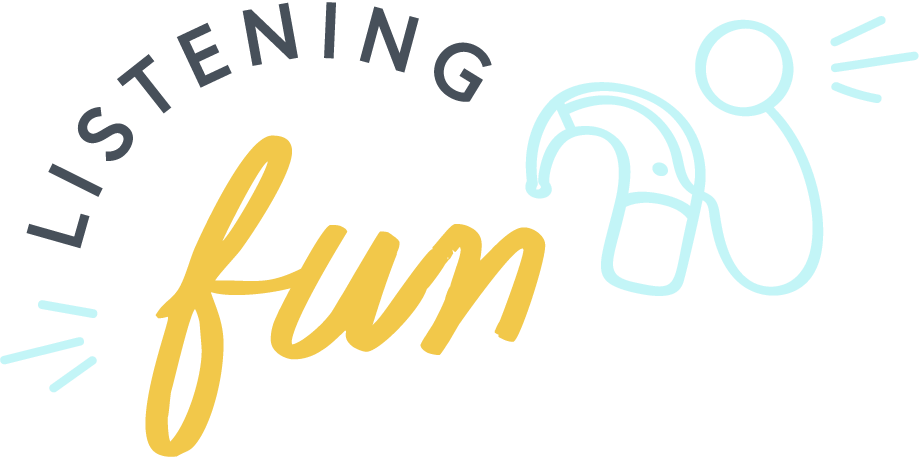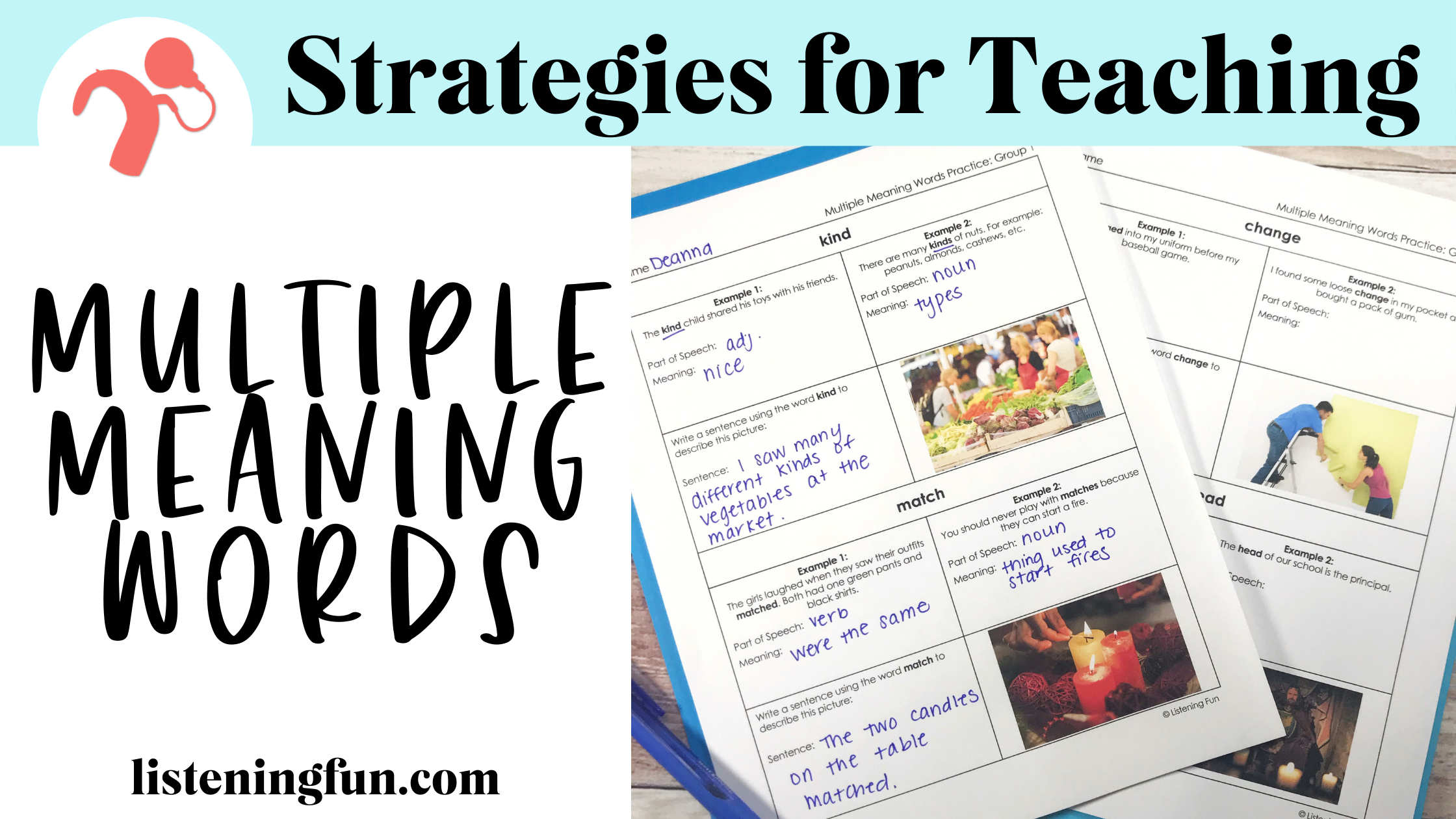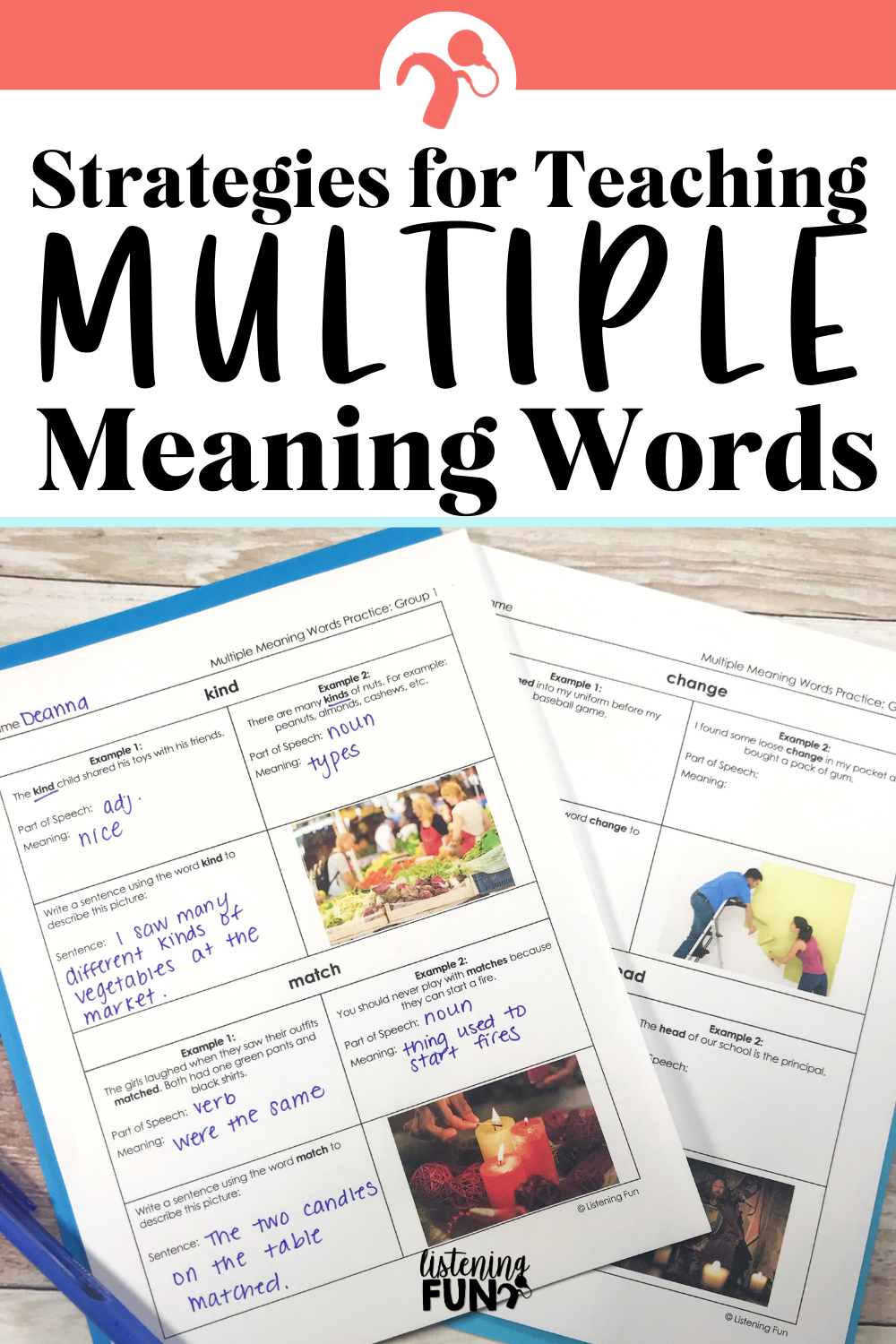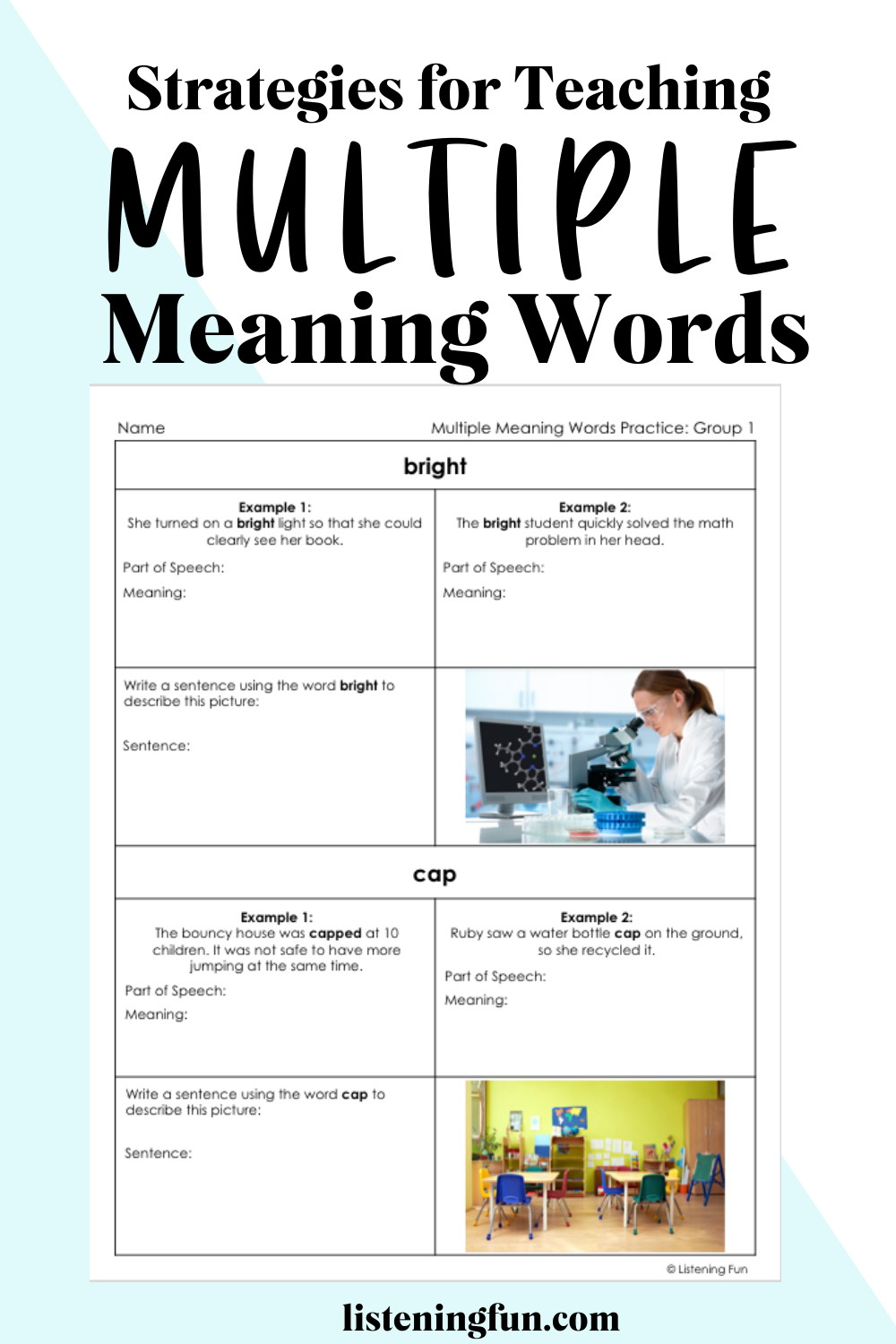Here's How to Teach Multiple Meaning Words Using 4 Easy Strategies
Understanding multiple meaning words can be tricky for many students. It can be especially challenging for students with hearing loss due to a lack of incidental learning. Incidental learning is how most children learn new vocabulary; they overhear language throughout their environment every day.
Multiple meaning words can be challenging because the student knows one meaning but doesn’t realize that there are other meanings of that word out there. Multiple meaning words can also be referred to as homonyms. For example, someone might talk about how a girl in her class is very bright, and a student might be wondering how a person could be bright like the sun, not realizing there is another meaning.
Direct teaching of multiple meaning words can help deepen students’ listening and reading comprehension and expand their vocabulary use in their writing.
Speech Language Pathologists and Teachers of the Deaf and Hard of Hearing use strategies to help teach multiple meaning words. In this blog, we will discuss 4 strategies for teaching multiple meaning words.
Pick Meaningful Words
Meaningful words are words that students will hear and use often, or words that are commonly misunderstood. Here is a list of The 100 Most Important Multiple Meaning Words Kids Need to Know. If you pick meaningful words when teaching about multiple meaning words, students will more than likely already have a connection to at least one of the meanings to build off of. Teachers and SLPs have limited time with students, so it’s important that we focus on words that will have the greatest educational impact.
I don’t typically focus on basic meanings like bat (the animal) vs. bat (in baseball) because most students can figure out those meanings in context. I would rather focus on words where the student believes that word only has one meaning, such as “rate.” Most students think of a movie rating, but it is also commonly used in the phrase “at this rate…”. This is the kind of saying that might confuse students who do not have a strong understanding of multiple meaning words.
Use Context Clues
We cannot possibly teach every multiple meaning word out there, so we teach strategies that can apply to many words. One strategy is looking to the surrounding sentence for context clues. For example, if the sentence says, “Many people season food with salt to make it taste better,” the student needs to be able to realize that this sentence is probably not talking about the seasons summer, winter, spring or fall. You can read the sentence and ask them, “Does that make sense?” Teaching the student to question their assumptions by using context clues can help them identify the true meaning of the word. This is the main strategy that I use in my Multiple Meaning Words resource. It includes 45 words so you can use it all year (digital and print version included).
Use visuals
Using pictures is a great way to help your visual learners build a mental image of the different multiple meaning words or homonyms. Have students fold a sheet of paper in half. Then on each side, let them illustrate the meaning of the word. For example, with the word ship, students will draw an actual boat (ship) on the left side of the paper. On the right side, they may draw a package at a post office being “shipped.” Many of my students really enjoy these drawing activities. I extend the activity and incorporate context clues by having the student write a sentence about their picture that includes a context clue.
Use Words From Classwork
Sometimes I will pull any classwork from the student’s ELA folder or Google Classroom. I will scan the page and pull out a multiple meaning word. We will read the sentence together and determine which meaning applies in this case. Then, together we will brainstorm other meanings of that word. This works great if the student’s class is currently reading a chapter book, but there are often many good examples in social studies textbooks as well. This strategy is useful because it is previewing and reviewing vocabulary relevant to the student’s actual classwork.
Teaching multiple meaning words is a great way to increase vocabulary comprehension and grow a student's language and listening skills.
Thanks for reading and happy teaching!
-Deanna




